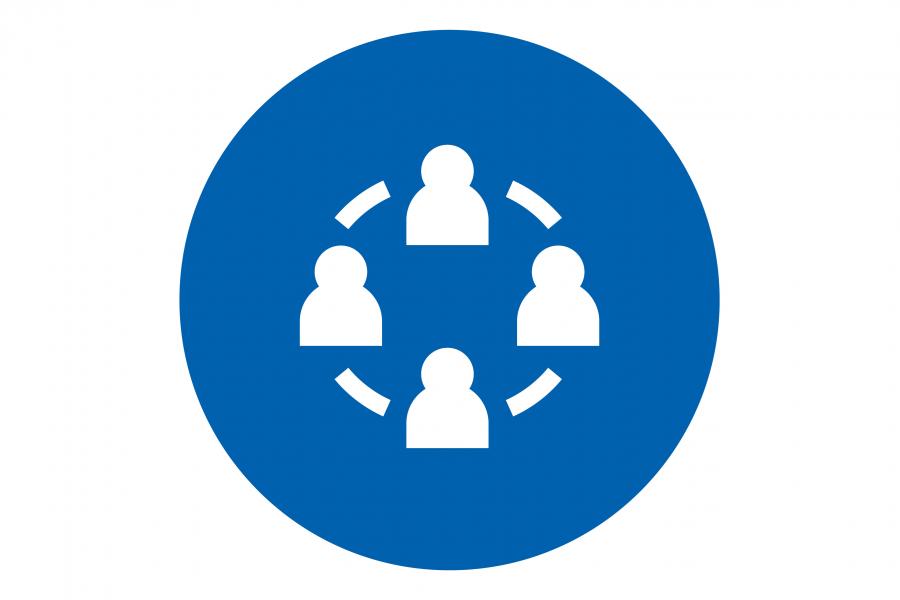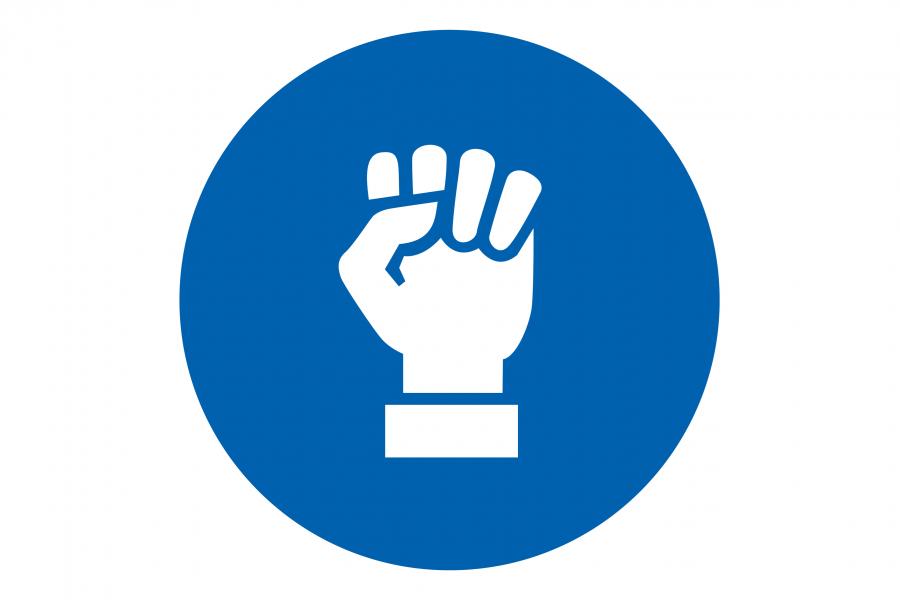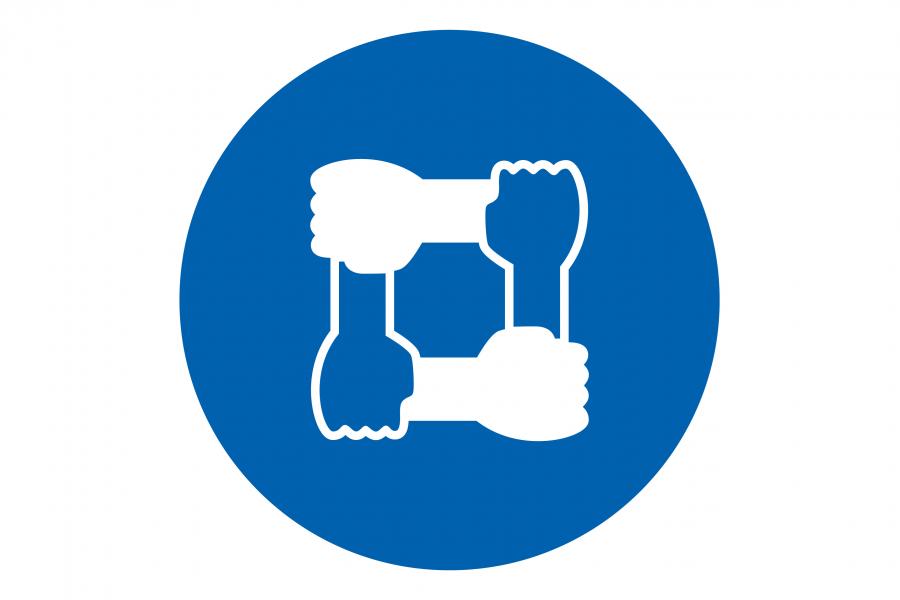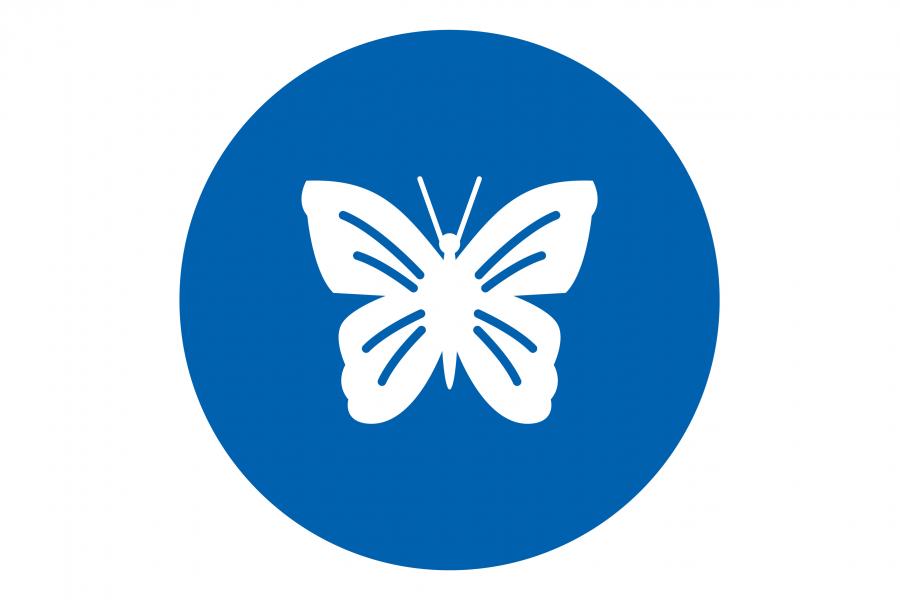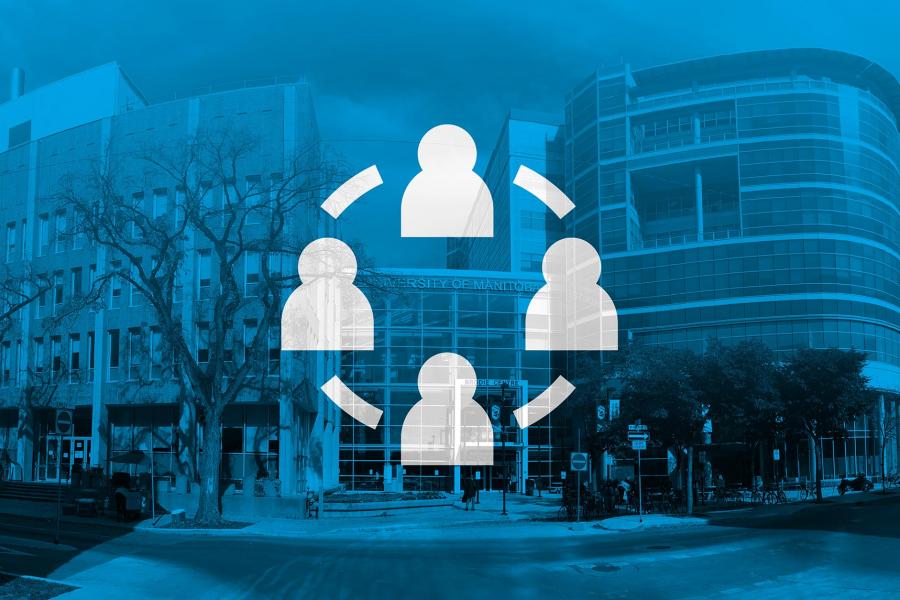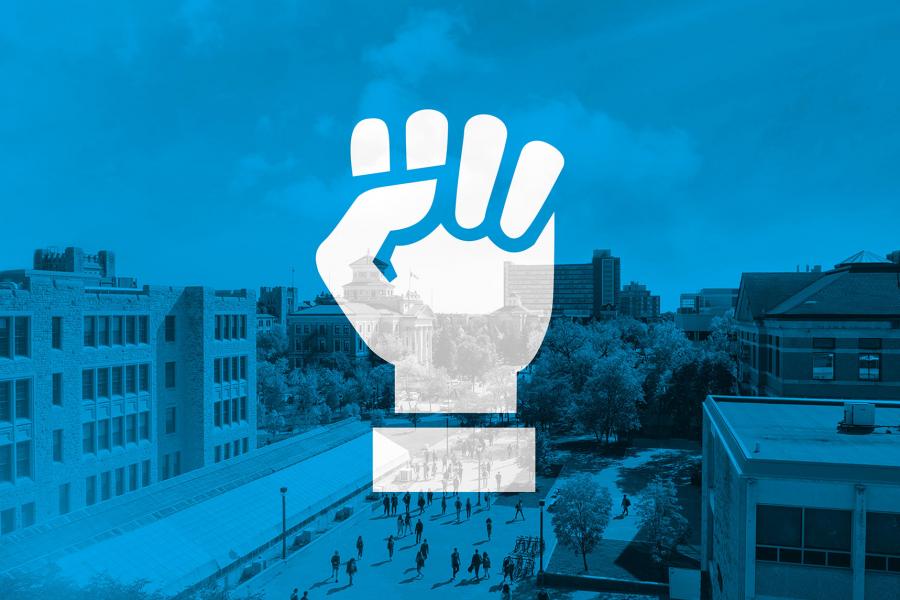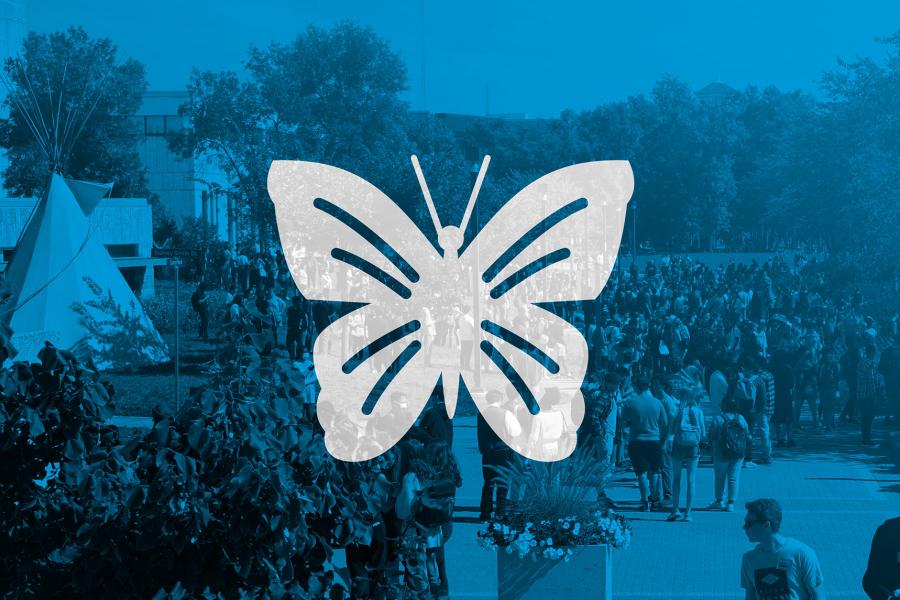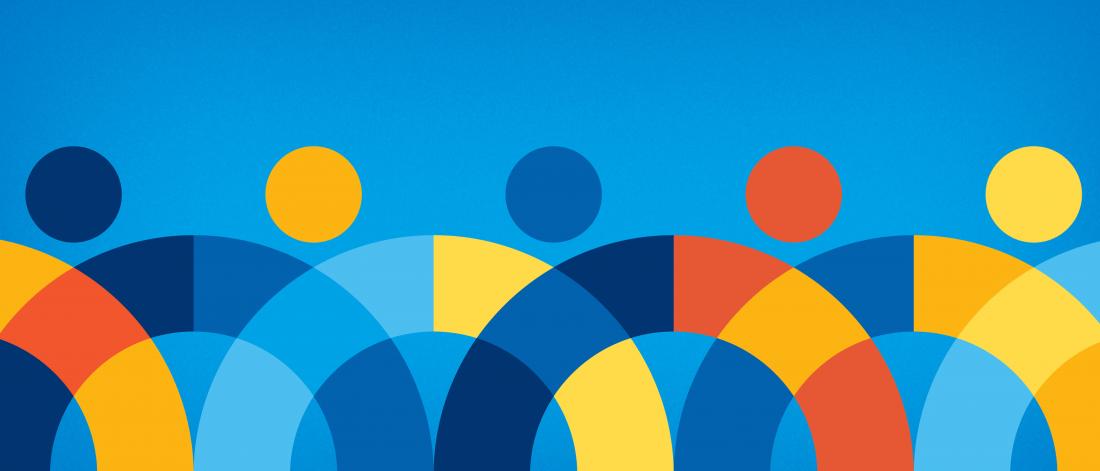
Office of Equity Transformation
Fostering a vibrant community
The President's Task Force on Equity, Diversity, Inclusion and Accessibility signified a pivotal moment in our journey and set the course for meaningful change. Ensuring transparency by tracking equity initiatives, sharing updates on actions taken, and measuring progress toward fostering an inclusive and equitable campus environment. The Task Force made 58 recommendations, grouped in 8 categories. All recommendations are implemented and ongoing or in process.
Recommendation categories
- Leadership:
3 implemented, 7 implemented and ongoing - Planning and Policy:
1 implemented, 3 implemented and ongoing - Monitoring, Measuring Progress, and Accountability:
2 implemented and ongoing, 3 in progress - Increasing Diversity and Equity across UM:
8 implemented and ongoing, 1 in progress - Accessibility:
2 implemented and ongoing, 3 in progress - Building awareness and support:
5 implemented and ongoing - Addressing EDI in Academic Programs, Teaching, and Research:
9 implemented and ongoing, 1 in progress - Promoting Inclusion and Safety:
8 implemented and ongoing, 2 in progress
Monitoring
-
4
Implemented
-
44
Implemented and Ongoing
-
10
In Progress
Implemented (4)
Recommendation 1: Leadership
- Establish an EDI lead in senior administration to work directly with the President’s Executive Team to advance EDI across UM. Working with the team of Vice-Presidents, the EDI Lead will ensure that EDI is integrated into all aspects of the institution including academic programs, research, administration, and community life. The EDI lead will need to work especially closely with the VP (Indigenous) to identify ways in which collaboration and coordination can occur between efforts to advance Indigenous achievement and engagement and EDI more broadly. The EDI lead will require an understanding of university governance and have the ability to work with and across all historically excluded groups.
- The EDI lead should undertake a thorough review of existing structures, programs, positions, and offices that address EDI across the University to determine next steps for creating a structure that ensures leadership, coordination, accountability, and active engagement in advancing EDI across the entire institution.
- Building on the findings of the review outlined above, establish an EDI Office to support the EDI
Recommendation 2: Planning and policy
- Establish EDI as an institutional priority in the University’s new strategic plan with goals clearly articulated.
Implemented and Ongoing (44)
Recommendation 1: Leadership
- Lead in providing strategic direction, addressing accessibility, directing and coordinating the work of central support units/positions engaged in activities to advance EDI across the institution, and supporting EDI work undertaken at the unit level.
- Allocate ongoing resources through the centralized budget process to support the work of EDI.
- Ensure that increasing diversity and a commitment to EDI are considerations in the hiring of all senior administrators at UM. Applicants for senior administrative roles should be required to submit an EDI statement.
- Require new senior administrators to attend training on EDI as part of their on-boarding.
- Require all administrators (including senior administrators, department heads, and administrators of administrative/support units) to engage in activities to increase their knowledge and skills to advance EDI. Require annual reporting on their activities to advance EDI within their units/areas of responsibility.
- Ensure that all leaders of academic and administrative units appoint EDI leads to engage faculty, staff, and students in working towards the advancement of EDI within their units. This appointment should be a senior position with responsibility for advancing EDI within the unit.
- Develop a course for administrators including EDI leads that addresses EDI leadership.
Recommendation 2: Planning and Policy
- Faculties and central administrative and support units should situate their EDI plans and priorities within the framework set by the University and integrate specific EDI goals and plans within their overall strategic plans. Specific action plans with measurable outcomes should be identified with annual reporting on progress.
- Develop and implement a plan to evaluate key policies that address EDI (e.g., the newly revised RWLE Policy and Sexual Violence Policy) regarding the extent to which they are effective in promoting the principles of EDI and addressing discrimination. This review should inform the need for additional policies (e.g., an EDI policy, anti-racism policy) or revision to current policies (e.g., hiring policies) to ensure that UM’s commitment to EDI is clear and actionable. There should be a regular review of EDI-related policies in light of new research and evolving best practices.
- Review hiring and advancement provisions in existing collective agreements and engage in discussion with unions about how agreements could better align with EDI goals. Include the advancement of EDI as an important element in the review/evaluation/approval process for of all policies and guidelines (including both University policies and unit-level guidelines).
Recommendation 3: Monitoring, Measuring Progress and Accountability
- Review current practice and policy regarding oversight, responsibility, and reporting on actions taken to address complaints of discrimination and harassment to ensure clarity of process, transparency, and accountability.
- Allocate resources to the ongoing study of EDI within UM. This should include, but not be limited to, regular implementation of a climate survey that assesses experiences of inclusion among members of the community.
Recommendation 4: Increasing Diversity and Equity across UM
- Increase awareness of equity and its importance in increasing diversity, including the ways in which equity might be enhanced among students, staff, and faculty (e.g., equity admissions policies, targeted hiring, recruitment practices that encourage greater diversity among applicants, targeted funding to support members of marginalized populations, etc.).
- Develop unit-level plans for advancing EDI among staff that include goals related to increasing diversity among staff, supporting EDI training for staff, and activities that create a greater sense of inclusion among staff.
- Faculties should develop academic hiring plans that are informed by their assessment of the diversity (or lack thereof) of faculty members within their units.
- Provide central support to assist hiring committees in developing processes that encourage diversity among applications (e.g., develop ads that avoid unnecessary requirements that exclude certain applicant groups, use active recruitment strategies that encourage application from members of historically under-represented groups, engage the assistance of firms with expertise in recruiting diverse applicants).
- Develop and require that hiring committee members participate in training that addresses best practices to advance EDI in hiring.
- Communicate the expectation that faculty and staff promote EDI in their work. EDI activities should be tracked in annual reporting of activities and discussed as part of performance evaluations.
- Recognize efforts by faculty and staff to advance EDI as important service to the University. Administrators should be aware of service expectations related to EDI and the burden of service that may be placed on members of historically under-represented groups. Such contributions should be acknowledged and influence the extent to which other service or teaching is expected or assigned. The level of service expected of a faculty or staff member should be accurately reflected in their assignment of duties.
- Assess commitment and contributions to promoting EDI in advancement processes (e.g., tenure, promotion) of faculty and staff.
Recommendation 5: Accessibility
- Report on current physical accessibility highlighting areas most accessible and those which are least accessible.
- Provide central support and monitoring to ensure that all UM content (including the website, teaching materials, forms, and educational/training materials) is accessible.
Recommendation 6: Building Awareness and Support
- Create an inventory of workshops and resources available at UM to increase understanding of EDI. Such an inventory would support unit-level plans for increasing awareness and commitment to EDI and would assist individuals interested in learning more about EDI. Gaps in resources could be identified and addressed through new initiatives.
- Offer education regarding equity and its importance in systemic change including ways in which equity can be addressed in meaningful ways in post-secondary institutions (e.g., through equity admissions policies, targeted hiring, awards that support members from historically marginalized groups, etc.).
- Assign responsibility for promotion of EDI awareness at an institutional level to the EDI Office. This Office should also serve as a resource to academic and administrative/support units as they develop unit-specific educational initiatives.
- Provide resources through the EDI Office to individual units for the development and implementation of new initiatives that increase awareness of EDI and create opportunities for engagement and dialogue regarding EDI among students, staff, and faculty.
- Develop strategies and supports to engage those reluctant to accept EDI as a University priority.
Recommendation 7: Addressing EDI in Academic Programs, Teaching, and Research
- Encourage units to assess ways in which content related to EDI is relevant and best addressed in their programs. Supports should be provided to units to facilitate such discussions within program curriculum committees with goals and plans developed in a collegial manner, implemented within academic programs, and monitored.
- Require submissions for program and course introductions/revisions to indicate how EDI has been considered in the development of the proposal.
- Provide funding for EDI teaching and learning projects (similar to the Indigenous Initiatives fund).
- Consideration should be given to the sustainability of initiatives once proven effective.
- Encourage instructors to incorporate EDI into their teaching. Faculty should be provided with the opportunity for advanced training so that they can bring more diverse content and readings into their courses. Resources need to be developed to support efforts to modify curricula/courses (e.g., a bank of EDI materials that are relevant for various topics/disciplines).
- Provide support for instructors to develop skills for addressing issues like systemic racism, sexism, ableism, discrimination based on sexual identity and/or orientation, ageism, etc. in the classroom.
- Include education for researchers on how to incorporate EDI into their research programs including addressing EDI considerations in research design and practices, data collection and analysis, trainee recruitment, and research team participation.
- Include EDI considerations in the criteria used to award internal research funding.
- Include instruction on how to incorporate EDI activities and goals in teaching and research dossiers, tenure and promotion applications, and annual performance reviews. For example, as part of developing a teaching or research dossier, faculty should be encouraged to incorporate statements about their values, beliefs, and goals for addressing EDI.
Recommendation 8: Promoting Inclusion and Safety
- Provide funds centrally and at the unit level to encourage and support events and ongoing activities specifically directed towards creating a sense of inclusion for all members of the community.
- Request that academic and administrative/support units identify specific tactics aimed at building an inclusive environment as a component of their EDI plans.
- Gather further feedback from students to identify and respond to areas where gaps in support for particular groups of students are experienced.
- Explore the need for strategies that address other types of discrimination.
- Establish processes and protocols for the approval of activities on campus that are controversial and experienced as offensive by some, recognizing the need to balance freedom of expression with the responsibility to provide a work and learning environment that does not harm individuals.
- Develop a campus map that clearly identifies EDI related resources and safe spaces.
- Recognize the diversity of faiths within our community and support students, staff, and faculty who wish to observe holidays within various traditions.
In Progress (10)
Recommendation 3: Monitoring, Measuring Progress, and Accountability
- Develop a process by which the University and academic and administrative/support units monitor and report on progress towards EDI goals that are identified in their respective strategic plans. Oversight of this process should be given by the EDI Lead with results shared with the President and the President’s Executive Team and reported to the UM community.
- Improve the collection of data on the diversity of students, staff, and faculty. There are a number of issues to address to better benchmark diversity within the UM community and monitor change including the need to harmonize the collection of diversity data across students, staff, and faculty; review UM’s data systems to ensure the ability for more robust collection and updating of baseline diversity data; develop a comprehensive, multi-pronged plan for increasing participation in self-declaration; and develop a plan for ongoing analysis and reporting of diversity data.
- Create central supports for the evaluation of EDI plans including assistance in developing evaluation criteria, identifying and collecting relevant data, data analysis, and reporting.
Recommendation 4: Increasing Diversity and Equity across UM
- Support faculties in analyzing the diversity of their students, setting goals for student diversity, and developing recruitment strategies and admissions policies that align with their goals.
Recommendation 5: Accessibility
- Allocate significant resources to increase the physical accessibility of UM and comply with the standards set out by the AMA. Physical inaccessibility exists relating to older structures that would not meet current building code guidelines and within areas that fall outside of current building code guidelines (e.g., lab and lecture room physical layout).
- Guided by the results of the accessibility audit and completed in consultation with experts in accessibility, develop a multi-year plan for increasing physical accessibility across campuses. Annual reporting on progress should be required.
- Create a central office to coordinate accessibility and accommodation. There is a need for coordination and consistency across UM to address accessibility and accommodation including, for example, support for individuals with disabilities when applying for positions, and expertise and resources to assist in the development and implementation of accommodations plans. The services offered by this office should work in collaboration with Physical Plant and build on the experience of, and be coordinated with, Student Accessibility Services
Recommendation 7: Addressing EDI in Academic Programs, Teaching, and Research
- Incorporate reporting and discussion of how faculty have addressed EDI in their teaching and research as part of their annual performance review.
Recommendation 8: Promoting Inclusion and Safety
- Develop an anti-racism strategy that encompasses prevention (including education) and processes to address racism when experienced. The extent to which the RWLE policy and procedure is effective in addressing racism must be evaluated.
- Develop a plan to create more safe spaces on campus where members of under-represented groups can gather and connect with others who have a shared identity for support and dialogue. This will require engagement with various groups across campus to assess their specific needs.
Our guiding principles
EDIA learning and engagement opportunities
The learning and engagement page offers resources and opportunities for the UM community to deepen their understanding of equity, diversity, inclusion, and accessibility (EDIA). It provides tools and training to foster inclusive practices and promote a culture of belonging across the university.
Terminology
Ableism
The system of oppression that disadvantages disabled people and advantages people who do not currently have disabilities. Like other forms of oppression, it functions on individual, institutional and cultural levels. Ableism is not solely about the experiences of disabled people as targets of discrimination, but rather about the interaction of institutional structures, cultural norms and individual beliefs and behaviors that together function to maintain the status quo and exclude people with disabilities from many areas of society.
Ageism
A system of oppression that produces social and physical barriers based on one’s age, particularly those deemed especially young or especially old. Unlike many systems of oppression, ageism contains two binaries. One of them benefits adults at the expense of children, teenagers and youth; while another binary benefits middle-aged individuals at the expense of elders and seniors (Anti Oppression Network, 2013).
Anti-racism
Anti-racism is the active process of acting to challenge not only one’s own biases and prejudices, but involves actively engaging in the work of dismantling racism as a system of oppression and dismantling the policies, social relations, attitudes, practices that promote and/or sustain racial inequality.
BIPOC (Black, Indigenous and People of Colour)
A collective term to refer to individuals and communities subjected to racial marginalization and systemic racism. While this term originated in calls for solidarity between and across communities impacted by systemic racism and the specific histories of these experiences, widespread use of acronym without attention to difference led to criticism that BIPOC conflated difference. As such, this is no longer the preferred term and generally has been replaced with “Indigenous, Black and racially marginalized people”.
Chronic disease (also see Chronic health condition)
Those conditions that are generally incurable, are often caused by a complex interaction of factors, and usually have a prolonged clinical course (source: Max Rady College of Medicine).
Chronic health condition
Any condition, including mental health conditions, that is ongoing. It may be continuous or re-occur over a long period of time. Also see “episodic disability and chronic health conditions”. Chronic health terms, such as “condition”, “disease”, and “illness” are often used interchangeably in public, policy, and academic discourses, which contributes to confusion regarding appropriate language. Individual chronic health experiences, like disability experiences, are diverse. In addition, particular terms may be interpreted as promoting a medicalized perspective on chronic health, which does not adequately emphasize the disabling impact of systemic barriers that impede the full participation of those with disabilities and chronic health conditions in society. Accordingly, it is important to be aware of the difference between medical and social models of disability when discussing disability and chronic health, regardless of the exact language being used. Most importantly, terminology and language choices should reflect the preferences of individuals or specific communities.
Chronic illness (also see Chronic health condition)
An illness that persists for a long period of time.
Colonialism
Colonialism is the policy or practice of acquiring full or partial political control over another country to exploit it economically. This often includes cultural and political dimensions of control, and it may include occupation with settlers.
Decolonization
Decolonization is (1) the withdrawal of state control of a former colony that leaves the territory to be self-governed and independent; (2) a process through which colonial power and the privileges it has created are dismantled through reviewing policies, procedures and laws to remove inequities between the colonizer and the colonized. Decolonization requires colonizers recognize and accept the impact of historical and current colonial policies on the colonized and to choose to restore equity, autonomy and sovereignty.
Deficit ideology
Deficit ideology is a worldview that explains and justifies outcome inequities–such as poverty, unequal educational access and attainment, poor health, socio-economic standing — by ascribing the inequities to supposed deficiencies that are attributed to disenfranchised individuals and within systemically marginalized communities.
Disabled persons (see also Persons with disabilities)
Some advocates within the Disability community embrace identity-first language that centers the disabled experience. Terminology and language should reflect the preferences of individuals or specific communities.
Diversity
Diversity refers to all the ways that people differ, including characteristics, personal experiences, values and world views.
Episodic disability and chronic health conditions (also see Chronic health condition)
Characterized by fluctuating periods and degrees of wellness and disability. The duration, frequency, and types of symptoms experienced during these periods may be unpredictable (source: Realize Canada).
Equity
Equity is the guarantee of fair treatment, access, opportunity, and advancement for all students, faculty and staff, while at the same time striving to identify and eliminate barriers that have prevented the full participation of systemically marginalized groups.
Everyday racism
Everyday racism is a concept conceived by sociologist Philomena Essed which refers to the “mundane” elements of everyday life that are typically not recognized because these manifestations of racism have become so normalized that they are typically not identified as racism. Everyday racism refers to tone, language, a gaze, forms of surveillance (in public spaces stores), differential treatment/service (being ignored in a store, denying the reality of a racially marginalized person or the expectation that one can speak for all members of a racialized group) and actions such as moving when an Indigenous, Black or racially marginalized student is seated beside a person on the bus or in the classroom. Everyday racism is multidimensional and its impact is cumulative.
Gender diversity
Gender diversity acknowledges and respects gender identity and expression beyond a gender binary framework. Using the correct names and pronouns for gender diverse people, as well as gender neutral language are reasonable expectations that is inclusive to gender diverse people.
Gender expression
Gender identity
A person’s internal and individual experience of gender. It is not necessarily visible to others and it may or may not align with what society expects based on assigned sex. A person’s relationship to their own gender is not always fixed and can change over time.
Historical trauma
Historical trauma is the cumulative emotional harm to an individual, generation or multiple generations caused by a traumatic experience or event.
Inclusion
Inclusion is the process of creating an environment in which any individual or group is welcomed, respected, supported and valued to fully participate in all the opportunities afforded by the university.
Indigenous
On Turtle Island (Canada), Indigenous refers to people who identify as First Nations, Métis or Inuit. Indigenous is used instead of Aboriginal for three reasons. First, Indigenous is internationally recognize within the United Nations Declaration on the Rights of Indigenous Peoples. Second, and more importantly, “Aboriginal”, like “Indian” is considered an external colonized creation and has been officially denounced by the Association of Manitoba Chiefs in 2014. Third, Indigenous comes from the Latin world “indigena,” which means “sprung from the land.” As such, Indigenous not only recognizes territory and land claims, but it connects Indigenous people to their land.
Intersectionality
Intersectionality is a term associated with critical legal scholar Kimberlé Crenshaw that refers to the ways that racism, racial discrimination, harassment, and vilification are frequently linked, shaped, and informed by other structural forms of oppression linked to sex, gender, class, disability, and sexuality. As Crenshaw states: “Intersectionality is a lens through which you can see where power comes and collides, where it interlocks and intersects.” Applying Intersectionality disrupts frameworks by offering a lens to represent how different forms of inequality work together and aggravate each other, by describing how the various structures of power frame identities in ways that result in some people experiencing multiple oppressions and inequalities simultaneously.
Marginalization
Microaggression
Microaggression are everyday slights, insults, actions, verbal and non-verbal cues that message to target marginalized groups that they are not fully valued or trusted, do not belong, or are unwelcome. Microaggressions can be unintentional; but impact must be considered over intent. People experience microaggressions differently based on intersectional identities and power relations between individuals, within institutions, and in society. Microaggressions have a cumulative impact on individuals.
Misogyny
Misogyny means hatred of women. It takes multiple forms including male privilege, patriarchy, gender discrimination, sexual harassment, violence against women and gender diverse individuals and sexual objectification. Misogyny often operates intersectionally with other forms of oppression including various forms of racism, homo and transphobia, ableism and ageism.
Persons with disabilities (see also Disabled person)
The "person-first" language emphasizes the person before the disability. The United Nations defines persons with disabilities as those who have long-term physical, mental, intellectual or sensory impairments which in interaction with various barriers may hinder their full and effective participation in society on an equal basis with others.
Privilege
The unfair and unearned advantages one is granted in society just from having, or being perceived to have, elements of identity that align with norms deemed to be culturally superior according to societal rules and systems that dictate social hierarchies (Anti Oppression Network, 2013).
Race
Race is one of the fundamental components of descriptive systems of difference in society (e.g., along with sex-gender, class, ability, and sexuality). At its inception, race was defined as a natural or biological difference, indicated by physical features such as skin colour, hair texture and other bodily features. Race became a key system of classification in European imperial and colonial domination to justify hierarchies of humanity.
There is a long history of asserting racial differences as natural and inevitable, as evidence of different levels of intelligence, ability, humanity, worth, and so on. Despite efforts to attribute differences between different groups to biological or genetic differences, science demonstrates that differences within different groups are greater than the differences between the so-called races. As such scholars and researchers recognize that race is a socio-historical and social construct that structures lived experience.
Racial discrimination
Racial discrimination refers to behaviour that impedes and disadvantages people, by withholding benefits, opportunities due to their perceived race, colour, nationality, ethnicity, ethno-religious or national origin.
Racial equity
Racialized identities (see also Racially marginalized)
“Race” refers to the invention of different subspecies of people based on physical and cultural characteristics such as skin colour, accent or manner of speech, name, clothing, diet, beliefs and practices, places of origin, etc. Racialization, then is “the process by which societies construct races as real, different and unequal in ways that matter to economic, political, and social life” (Ontario Human Rights Commission, 2005, p. 11). Recognizing race is a social construct, racialized identities replaced inaccurate and outdated terms such as ‘racial minority’, ‘visible minority’, or ‘non-White’.
Racially marginalized (see also Racialized identities)
Marginalization as the result of racialized identity and systemic racism. This term ensures that the dual processes of racialization and marginalization are recognized when referring to individuals or groups of people. It is currently the recommended term, replacing previously used terms including racial minority, visible minority, racialized person, or Person of Colour.
Racism
Racism is the differential treatment of various human racial groups by a dominant racial group rooted in the belief of the superiority of one group over the other. Racism takes many forms, some of which include symbolic, embodied, psychological, institutional/systemic, everyday, and interpersonal. Racism is a deeply embedded historical system of institutional power that continues to operate regardless of the intentions of current actors unless intentionally interrupted. Racism differs from individual racial prejudice and racial discrimination in the historical accumulation and ongoing use of institutional power and authority to support prejudice and to systemically enforce discriminatory behaviors with far reaching effects. Racially marginalized people are denied access to social, economic, and political systems that regulate, define and control all aspects of their lives.
Sexism
Sexism is as a system of oppression that results in disadvantaging women and girls, and non-binary individuals. It is an attitudinal-conceptual-cognitive-orientational complex of male supremacy, male chauvinism and misogyny.
Systemic/institutional racism
Transphobia
Fear and/or hatred of any transgression of perceived gender norms, often exhibited by name- calling, bullying, exclusion, prejudice, discrimination or acts of violence—anyone who is trans and/or gender diverse (or perceived to be) can be the target of transphobia. While transphobia speaks more directly to the discrimination and violence faced by trans and gender diverse people, or those perceived to be, cissexism is the overarching order of societythat enables it. Like other forms of oppression, transphobia may show up in interactions between individuals or groups of people or it can be entrenched in an organization’s culture, rules, policies and practices that may look harmless on the surface but in fact exclude and create barriers and an overall hostile climate for some individuals (Egale.ca)
Two-spirit
Two-spirit (also spelled 2-spirit or two-spirited) was coined by Myra Laramee in 1990. It refers to an Indigenous person who possesses both masculine and feminine spirits. It is also used by English-speaking communities on Turtle Island to distinguish the wide variety of Indigenous concepts of gender and sexual diversity as separate from the European gender binary.
2SLGBTQIA+
Acronym that stands for two-spirited, lesbian, gay, bisexual, trans, queer, questioning, intersex, asexual and other minoritized sexual and gender identities. Used as an umbrella term to encompass a much wider range of identities and experiences related to sex, gender, and attraction that have been marginalized and minoritized by dominant norms of heterosexual and cisgender identities. This generally is the preferred term in Canada because it places two-spirit and Indigenous concepts of gender and sexual diversity first.
White/settler fragility
Sources for terminology and for further terminology
Contact us
Office of Equity Transformation
Room 105 Administration Building
University of Manitoba
Winnipeg, MB R3T 2N2 Canada

